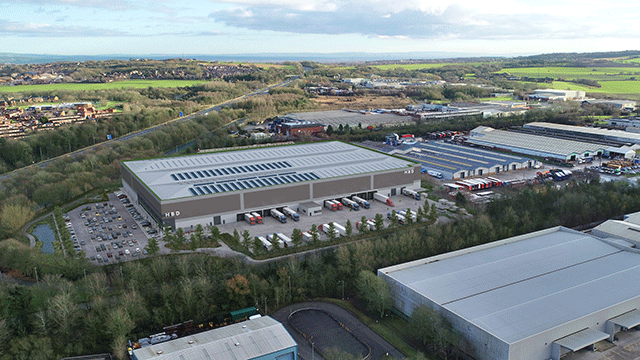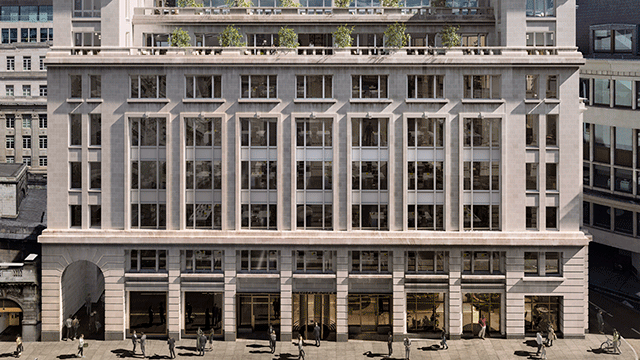Amid a downturn in the housing market, astute developers are preparing for the upturn. But how do they assess how the market will grow? Graham Norwood identifies five points
Look at the ads in the Sunday Times property section if you want to know the state of the residential development market. One developer promises rent guarantees of 6% pa for two years. Another offers to pay stamp duty and waive the 5% deposit. One builder promises to pay for the first year’s mortgage and service charges.
And then there is the discovery of the paper’s “secret shopper”. It took just a few hours for an undercover reporter to save more than £25,000 on a flat, above and beyond official offers, simply by negotiating in the marketing suite.
Honest observers say this is no bad thing. “Everyone knew 10% or 15% rises weren’t sustainable. Developers made hay while the sun shone, and who could blame them? But it’s better at a more competitive level,” says Stephan Miles-Brown, head of Knight Frank’s burgeoning residential development empire.
So if a return to realism drives today’s market, what are the longer-term influences? How developers work, what they build and where, are all changing in response to five long-term factors.
1 Density
The government’s PPG3 guideline is transforming the market. The proportion of detached houses fell from 45% of the new-build total in 1999 to 32% by late 2002, while flats soared from 17% to 32%.
In Q1 this year, the trend accelerated, with flats comprising 37% of completions and detached houses just 27%.
“From a commercial viewpoint, high-density development suits builders because land is invariably the most expensive component of any development,” says Pierre Williams of the House Builders’ Federation.
But he warns that long-term benefits for builders and housebuyers rest with greater balance between apartments and houses.
“The push for high-density has come from the not-in-my-backyard lobby, which claims the countryside is being concreted over. In fact only 11% of England’s land is urban, while 36% of it is rural and is in some way protected against development,” he says.
2 Social housing
Parallel to the drive to brownfield and high-density housing is the growing obligation to provide social housing.
“The planners’ insistence on 50% social housing is not making development worthwhile. The government is forcing developers to look at fewer, larger schemes, which means fewer homes,” says Jonathan Vandermolen, managing director of Insignia Blenheim Bishop.
He says slow planning and an increased emphasis on social housing have caused land values to drop by up to 20% in some locations. As a result, “most developers are looking for critical mass and require schemes of a minimum of 40-50 units”.
3 Land banks
Developers are reducing land stocks, partly because of a slow planning system but also because of the move to high-density homes.
Research from FPDSavills shows that residential land banks in early 2002 totalled 2m plots, 32% down on 1999. Because of planning delays, only 15% of plots have permission, leaving 1.7m plots without. Some developers are therefore shedding these, especially where near-term permission is considered unlikely.
“The slowing rate of growth in land prices in 1988 and falling land prices in 1989 actually preceded falls in house prices (see chart). We don’t expect history to repeat itself exactly but the figures do indicate that land buyers lost confidence in the future of some housing markets last year,” says Yolande Barnes of Savills.
4 Problems for London
An oversupply of buy-to-let property purchasing led to a slump in rents over the past year, frightening future buyers. This has been absorbed across most of the UK and often landlords have simply sold up. But in London, developers have created a large pipeline of new properties aimed at a market that no longer exists in any great quantity.
More research by Savills shows that up to 70% of new stock sold since 1997 in prime London locations has gone to investors, usually off-plan.
“Poorer prospects for capital growth, low yields and a weak rental market lead us to believe that investor demand will fall back sharply over the coming year,” warns FPDSavills’ Richard Donnell.
He says new-build prices could drop 10% in the capital by Christmas, with no bounce back in 2004. As a result, developers could put further developments on hold.
Evidence of this is already emerging. The latest National House Building Council figures confirm Greater London as one of the lowest areas of new completions anywhere in the country, while northern England is enjoying high growth (see above).
5 Opportunities for the rest of the country
To make sure the loss of demand that has hit London does not hammer other cities, Knight Frank – which is working with developers to corner an increasingly large share of the residential development sales market – has set up a team to encourage foreign investors in specific projects in Birmingham, Bristol, Cardiff, Glasgow, Leeds and Manchester.
“This is the big trend for the future. Liverpool has a real buzz now and the city is up for larger-scale, upmarket development. Plymouth is beginning to see the same movement with Discovery Wharf at the Barbican, and now Urban Splash is renovating the old naval buildings at Royal William Yard,” says Miles-Brown. “These are the result of years of meetings with developers.
“You’re only just seeing the start now, but devolution out of London is the big thing for the future.
“In places like Derby, Leicester, Coventry, no-one will build 1,000 units, but these places are emerging markets for good quality conversions and new-build.
“With this to look forward to, the long-term residential development picture is actually surprisingly good.”
|
Housing starts, Q1 2003 |
||||
|
There have been big regional variations |
||||
|
Region |
Q1 2002 |
Q1 2003 |
Change (%) |
|
|
Eastern England |
4,147 |
5,091 |
23 |
|
|
East Midlands |
3,597 |
4,397 |
22 |
|
|
Greater London |
4,126 |
4,187 |
1 |
|
|
Merseyside |
780 |
983 |
26 |
|
|
North East |
1,608 |
2,096 |
30 |
|
|
North West |
3,251 |
3,711 |
14 |
|
|
South East |
5,429 |
6,637 |
22 |
|
|
South West |
4,387 |
3,667 |
-16 |
|
|
West Midlands |
3,011 |
3,357 |
11 |
|
|
Yorkshire & H/side |
3,913 |
4,188 |
7 |
|
|
Northern Ireland |
2,177 |
2,535 |
16 |
|
|
Scotland |
4,613 |
4,961 |
8 |
|
|
Wales |
1,713 |
2,212 |
29 |
|
|
Source: National House Building Council, based on data from an estimated 85% of UK residential developers |
||||










